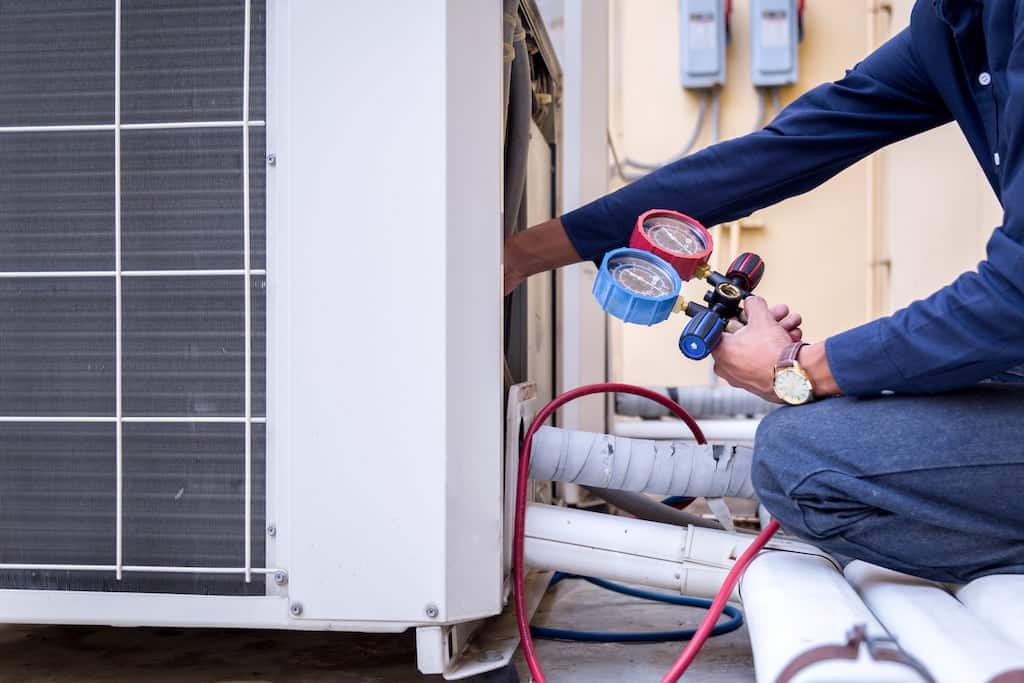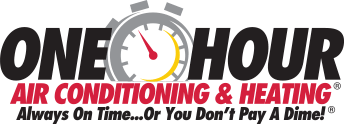
How to Improve Indoor Air Quality at Home
- Ventilate your home regularly to reduce indoor pollutants.
- Use air purifiers equipped with HEPA filters to capture fine particles.
- Keep humidity levels between 30% and 50% to prevent mold growth.
- Avoid harsh chemical cleaners; opt for natural alternatives.
- Incorporate indoor plants like spider plants or snake plants to help purify the air.
- Regularly clean and maintain HVAC systems for efficient operation.
- Test your indoor air quality periodically, especially if you notice health symptoms.
How healthy is the air you breathe inside your home? Indoor air quality (IAQ) is crucial for your family’s health and comfort, yet many homeowners overlook it. From hidden pollutants like VOCs to seasonal allergens and humidity issues, several factors can compromise the air quality in your living space. This comprehensive guide will walk you through practical steps to improve indoor air quality, ensuring a cleaner, healthier home environment for you and your loved ones. Whether you’re battling allergies, managing humidity, or simply want fresher air, these tips will help you breathe easier.

Understanding Indoor Air Quality (IAQ)
Did you know that the air inside your home can be more polluted than the air outside? Indoor Air Quality (IAQ) refers to the quality of air within your home, and it plays a critical role in your overall health. Poor IAQ can result from various pollutants like volatile organic compounds (VOCs), dust, allergens, and mold, which can cause a range of health issues such as respiratory problems, headaches, and fatigue. Understanding and improving your home’s IAQ is essential for maintaining a healthy living environment.
Assessing Your Home’s Indoor Air Quality
How do you know if your indoor air quality is up to par? Many homeowners are unaware of the signs of poor air quality until health issues arise. Common indicators include persistent coughing, sneezing, or a general feeling of stuffiness when indoors. You might also notice an increase in dust accumulation or a musty smell that could indicate mold growth.
To get a clearer picture, air quality monitors are an invaluable tool. These devices can detect levels of common pollutants like VOCs, carbon dioxide, and particulate matter. More advanced models even provide real-time data, allowing you to make immediate adjustments to your environment.
In some cases, you might need to consult a professional. If you’re experiencing significant health symptoms, or if your air quality monitor shows high pollutant levels, a professional inspection can help identify and rectify the root cause. Professionals use specialized tools to assess and improve your home’s air quality, ensuring a safer living environment for you and your family.
Eliminating Common Indoor Pollutants
Once you’ve assessed your home’s air quality, the next step is eliminating common indoor pollutants. Chemical pollutants are a significant concern in many homes. These can come from everyday products like cleaning supplies, paints, and even certain furniture. To reduce exposure, consider switching to natural, non-toxic cleaning products and low-VOC paints. Additionally, avoid using air fresheners or scented candles that can release harmful chemicals into the air.
Dust and allergens are another major source of indoor pollution. Regularly dusting surfaces, vacuuming carpets with a HEPA-filter vacuum, and washing bedding can help keep these irritants under control. For those with allergies, it’s also essential to keep pets out of bedrooms and off furniture to minimize dander.
Mold and moisture issues can severely impact indoor air quality. Bathrooms, basements, and kitchens are particularly prone to mold growth. To combat this, repair any leaks immediately, use exhaust fans while cooking or showering, and consider using a dehumidifier in damp areas. Mold-resistant products, such as mold-proof paint, can also be a valuable preventive measure.
Ventilation: The Key to Fresh Indoor Air
Proper ventilation is crucial for maintaining healthy indoor air quality. Without it, pollutants can build up, leading to a stale and unhealthy environment. Natural ventilation, such as opening windows and doors, is the simplest way to allow fresh air to circulate through your home. Even on cooler days, airing out your home for just a few minutes can significantly reduce indoor pollutant levels.
For homes where natural ventilation is limited, especially during extreme weather, mechanical ventilation systems offer a reliable alternative. These systems, like exhaust fans, air exchangers, or whole-house ventilation setups, are designed to continuously refresh indoor air by pulling in clean outdoor air and expelling stale indoor air. They are especially beneficial in rooms with high moisture levels, like bathrooms and kitchens, where mold and mildew can become a problem.
Not only does ventilation help remove pollutants, but it also regulates humidity levels, reducing the risk of mold growth. In addition, improved airflow can make your home feel more comfortable and reduce the concentration of allergens and irritants in the air. Whether through simple, natural methods or more advanced mechanical systems, enhancing your home’s ventilation is a critical step in ensuring fresh, clean indoor air.
Humidity Control for Better Air Quality
Maintaining the right humidity levels in your home is essential for good indoor air quality. Too much humidity can lead to mold growth, while too little can cause dryness, irritating your skin and respiratory system. The ideal indoor humidity level is typically between 30% and 50%. Keeping within this range helps prevent mold and dust mites, both of which thrive in high humidity.
To manage humidity effectively, dehumidifiers and humidifiers are your best tools. Dehumidifiers remove excess moisture from the air, making them especially useful in basements, bathrooms, and other damp areas. On the other hand, humidifiers add moisture to the air, which can be beneficial in dry climates or during winter when heating systems tend to dry out indoor air. Be sure to clean these devices regularly to prevent mold and bacteria from building up inside them.
In addition to using these devices, preventing moisture issues in the first place is crucial. Fix any leaks immediately, and use exhaust fans in the kitchen and bathroom to remove moisture from cooking and showers. Regularly check areas prone to dampness, such as basements, for signs of mold or mildew and address any issues promptly. Proper humidity control not only improves air quality but also makes your home more comfortable and reduces the risk of respiratory issues.
Filtration Systems and Air Purifiers
One of the most effective ways to improve indoor air quality is through the use of filtration systems and air purifiers. These devices work by removing pollutants from the air, making it cleaner and safer to breathe. Air filters, typically found in HVAC systems, are your first line of defense. They trap dust, pollen, and other airborne particles before the air circulates through your home. It’s important to choose high-efficiency particulate air (HEPA) filters for the best results, as they can capture particles as small as 0.3 microns, including many allergens and pollutants.
Air purifiers take air cleaning a step further. These standalone devices can be placed in any room to continuously filter the air. Some models also use HEPA filters, while others might incorporate activated carbon filters, which are particularly effective at removing odors, smoke, and VOCs. When choosing an air purifier, consider the room size and the specific pollutants you want to target. For instance, if you’re dealing with pet dander, look for a purifier designed to capture smaller particles.
Maintenance of these systems is key to their effectiveness. Regularly changing air filters in your HVAC system—typically every three months—is essential. For air purifiers, check the manufacturer’s guidelines on filter replacement, which may vary depending on usage and filter type. Neglecting maintenance can reduce the efficiency of these devices, allowing pollutants to build up in your home.
Controlling Combustion Pollutants
Combustion pollutants, like carbon monoxide (CO) and nitrogen dioxide (NO2), can pose serious health risks if not properly managed. These pollutants are released when fuels like gas, oil, wood, or coal are burned in appliances such as stoves, heaters, fireplaces, and gas-powered water heaters. To protect your indoor air quality, it’s crucial to control and minimize these harmful emissions.
Safe use of gas-powered appliances is a critical first step. Always ensure that stoves, ovens, and other gas appliances are well-maintained and properly vented. Never use a gas stove for heating your home, as this can lead to dangerous levels of CO. Regular inspections by a qualified technician can identify potential issues, like leaks or incomplete combustion, before they become serious problems.
Installing carbon monoxide detectors throughout your home is another essential measure. CO is an odorless and colorless gas, making it impossible to detect without a proper alarm system. Place detectors in key areas, such as near bedrooms and on every level of your home. Test them monthly and replace the batteries at least once a year to ensure they function correctly.
Proper fireplace and stove ventilation also play a significant role in reducing combustion pollutants. Ensure that chimneys and flues are clear of obstructions and cleaned regularly to allow smoke and gases to exit your home safely. If you’re using a wood-burning stove, choose properly seasoned wood to minimize smoke production, and never burn treated or painted wood, which can release toxic chemicals.

The Role of HVAC Systems in Air Quality
Your home’s HVAC (Heating, Ventilation, and Air Conditioning) system plays a vital role in maintaining indoor air quality. A well-maintained HVAC system not only regulates temperature but also filters and circulates the air, helping to reduce indoor pollutants.
How HVAC systems affect indoor air begins with filtration. The air filter in your HVAC system traps dust, pollen, and other airborne particles before they can circulate throughout your home. However, if filters are not replaced regularly, they can become clogged and less effective, allowing pollutants to build up. It’s recommended to check your HVAC filters monthly and replace them every 1 to 3 months, depending on usage and filter type.
Regular HVAC maintenance is crucial for ensuring the system runs efficiently and continues to contribute to good air quality. This includes cleaning coils, checking for leaks, and ensuring proper ventilation. An annual tune-up by a professional can catch any issues early and keep your system running smoothly. Proper maintenance not only improves air quality but also extends the life of your HVAC system, saving you money in the long run.
For those looking to further enhance air quality, upgrading to air-quality-friendly HVAC options is a worthwhile consideration. Modern systems offer advanced filtration options, like HEPA or electrostatic filters, which capture smaller particles more effectively. Some systems also include UV lights that kill bacteria and viruses, providing an extra layer of protection.
Impact of Household Products on Air Quality
Many everyday household products can negatively impact indoor air quality, often without you even realizing it. Volatile organic compounds (VOCs), which are chemicals found in numerous products, are a primary concern. These compounds can off-gas into the air, contributing to indoor pollution and potentially causing health problems like headaches, dizziness, and respiratory issues.
Common sources of VOCs include cleaning products, air fresheners, paints, and certain personal care items. To minimize exposure, start by identifying and reducing the use of products that contain these harmful chemicals. Opt for low-VOC or VOC-free alternatives whenever possible. For example, choose natural cleaning products made from plant-based ingredients or consider making your own using simple items like vinegar and baking soda.
Additionally, pay attention to furniture, carpeting, and other home furnishings. New furniture, carpets, and even some flooring materials can release VOCs into the air, particularly when they are new. To reduce their impact, look for products labeled as low-VOC or made from natural materials. When introducing new items into your home, increase ventilation by opening windows and using fans to help disperse any released chemicals.
Beyond VOCs, other household products can also affect air quality. Aerosol sprays, for instance, can release not only VOCs but also fine particles that linger in the air and are easily inhaled. Consider switching to pump sprays or other non-aerosol alternatives to further reduce indoor air pollutants.
Improving Air Quality with Houseplants
Houseplants are more than just decorative additions to your home; they can also play a significant role in improving indoor air quality. Certain plants are particularly effective at filtering out common pollutants and toxins, making the air in your home cleaner and healthier to breathe.
Some of the best plants for air purification include the snake plant (also known as mother-in-law’s tongue), spider plant, peace lily, and Boston fern. These plants are known for their ability to absorb harmful substances like formaldehyde, benzene, and trichloroethylene, which are commonly found in household products and materials. For instance, the spider plant is particularly good at removing carbon monoxide and other toxins, while the peace lily can combat mold spores in the air.
Plants filter indoor air through a process called phytoremediation, where they absorb pollutants through their leaves and roots, then break them down and neutralize them. In addition to removing toxins, houseplants also increase humidity levels by releasing moisture vapor during transpiration. This added humidity can help alleviate respiratory issues caused by dry air, especially in winter months when indoor heating is in use.
To get the most benefit from houseplants, it’s important to place them strategically around your home. Consider adding a few plants in areas where you spend the most time, like the living room, bedroom, and kitchen. Additionally, maintaining these plants is key to their effectiveness. Regular care, such as watering, dusting leaves, and ensuring they receive the right amount of light, will keep them healthy and efficient at filtering the air.
Regular Cleaning for Air Quality Maintenance
Regular cleaning is essential for maintaining good indoor air quality. Dust, allergens, and other pollutants can accumulate over time, making your home’s air less healthy to breathe. By adopting effective cleaning practices, you can significantly reduce the presence of these contaminants.
Best practices for dust and allergen removal start with regular dusting and vacuuming. Use a damp cloth for dusting surfaces to prevent particles from becoming airborne, and vacuum carpets and rugs at least once a week using a vacuum cleaner equipped with a HEPA filter. This type of filter is effective at trapping tiny particles that can trigger allergies or asthma. Don’t forget to clean underneath furniture and in corners where dust tends to collect.
Deep cleaning of carpets and upholstery is also crucial. Over time, these surfaces can harbor dust mites, pet dander, and other allergens. Steam cleaning or using a professional cleaning service every few months can help remove deep-seated dirt and allergens that regular vacuuming might miss. If possible, consider replacing old carpets with hard flooring, which is easier to keep clean and less likely to trap allergens.
Top Air Quality Tips for Lewisville, TX Residents
Living in Lewisville, TX, presents unique challenges and opportunities when it comes to maintaining good indoor air quality. The region’s hot summers, fluctuating humidity levels, and occasional pollen surges can all impact the air inside your home. Here are some tailored tips to help you manage and improve indoor air quality, no matter the season.
- Stay Prepared for Seasonal Allergens Lewisville’s warm climate means that allergy season can last longer than in cooler areas. Spring and fall are particularly problematic due to high pollen counts. To protect your indoor air quality, keep windows closed during peak pollen times and use an air purifier with a HEPA filter to remove pollen that enters your home.
- Manage Humidity Levels The humid summers in Lewisville can lead to increased moisture indoors, creating an ideal environment for mold growth. Keep indoor humidity between 30% and 50% by using dehumidifiers, especially in basements and bathrooms. In the winter, when the air is drier, use a humidifier to maintain comfort without overdoing it, as too much moisture can encourage mold.
- Combat High Heat and Air Pollution During the scorching summer months, air conditioning is a must, but it can also circulate indoor pollutants if not properly maintained. Ensure your HVAC system is regularly serviced, and consider upgrading to an air conditioner with enhanced filtration to reduce the spread of airborne particles. Also, be mindful of outdoor air quality alerts on particularly hot and polluted days; keep indoor air fresh by using air purifiers.
- Adapt to Texas Weather Conditions The unpredictable Texas weather can swing from dry to humid, and from hot to cold, sometimes in the same week! Use weather-appropriate strategies, such as adjusting your HVAC settings or opening windows on cooler, dry days to ventilate your home naturally, but close them when humidity spikes.
- Local Factors Affecting Air Quality Lewisville’s proximity to urban areas and highways can contribute to higher levels of outdoor pollution, which can seep indoors. To minimize this, install weather stripping around doors and windows, and use high-efficiency air filters in your HVAC system to block outdoor pollutants.
FAQs About Indoor Air Quality
-
What is the quickest way to improve indoor air quality?
Opening windows for ventilation and using an air purifier with a HEPA filter can quickly reduce indoor pollutants.
-
How often should I change my air filters?
Air filters should be checked monthly and replaced every 1 to 3 months, depending on your home’s needs and the type of filter used.
-
Can indoor plants improve air quality?
Yes, certain indoor plants like snake plants and spider plants can help filter out toxins and improve air quality by adding humidity.
-
How can I tell if my home’s air quality is poor?
Signs include persistent dust, musty odors, and respiratory issues. You can also use air quality monitors to detect pollutants.
-
What humidity level is best for indoor air quality?
Maintaining indoor humidity between 30% and 50% is ideal for preventing mold growth and keeping the air comfortable.







